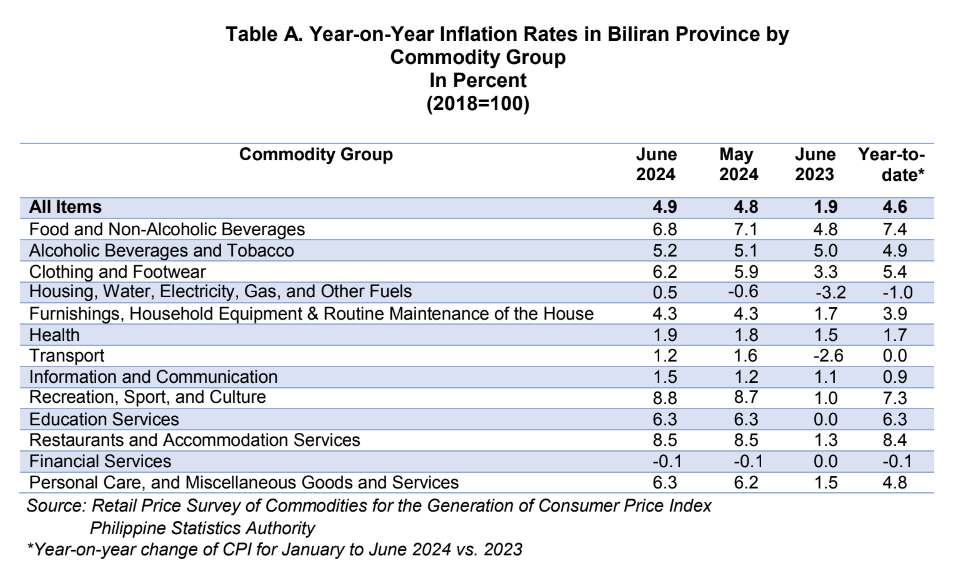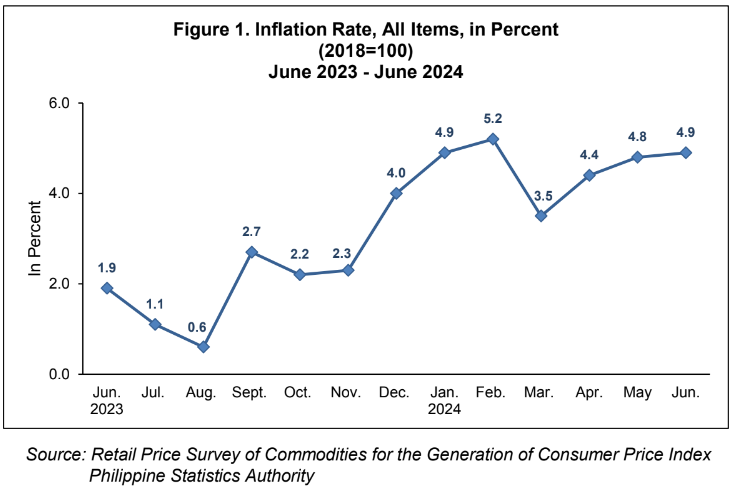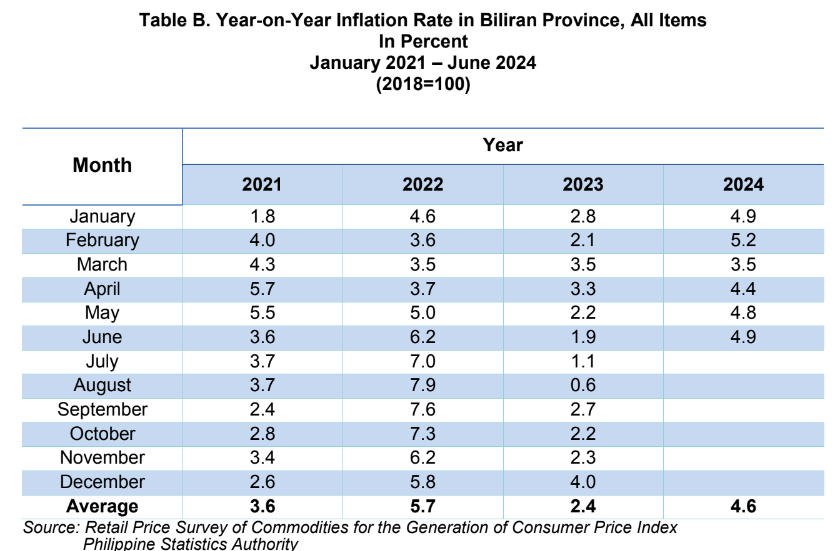

The inflation rate in Biliran Province increased further to 4.9 percent in June 2024, from 4.8 percent in May 2024. The average inflation rate from January to June 2024 stood at 4.6 percent. Meanwhile, the inflation rate in June 2023 was lower at 1.9 percent. (Figure1, Table A and Table B)
The uptrend in the province’s inflation in June 2024 was primarily influenced by the higher annual increment in the housing, water, electricity, gas and other fuels group at 0.5 percent inflation, from a negative inflation of 0.6 percent in the previous month. This was followed by the clothing and footwear with 6.2 percent during the month from 5.9 percent in the previous month. Information and communication group came in next with 1.5 percent from 1.2 percent. These commodity groups accounted for 83.9 percent, 5.8 percent, and 4.2 percent share to the uptrend in the inflation rate, respectively.
Other commodity groups that recorded higher year-on-year price movements in
June 2024 were the following:
a. Alcoholic beverages and tobacco at 5.2 percent from 5.1 percent;
b. Health at 1.9 percent from 1.8 percent;
c. Recreation, sport and culture at 8.8 percent from 8.7 percent; and
d. Personal care, and miscellaneous goods and services at 6.3 percent from 6.2 percent.
In contrast, food and non-alcoholic beverages group and transport group registered lower inflation rates during the month at 6.8 percent and 1.2 percent inflation, respectively.
The rest of the commodity groups retained their previous month’s respective annual rates. (Table A)
The food inflation decreased to 7.0 percent in June 2024 from 7.3 percent in the previous month. In June 2023, the food inflation was lower at 4.9 percent.
The deceleration of food inflation in June 2024 was mainly brought about by decrease in rice inflation at 24.0 percent from 24.6 percent in May 2024. Corn, also contributed to the downtrend with 17.5 percent from 21.2 percent in the previous month.
Other food items that contributed to the lower food inflation are as follows:
a. Milk, other dairy products and eggs at 3.3 percent from 3.4 percent;
b. Fruits and nuts at 3.5 percent from 4.0 percent; and
c. Sugar, confectionery and desserts at 0.0 percent from 2.0 percent.
In addition, faster annual decline was recorded in fish and other seafood at 5.0 percent during the month from an annual decrement of 0.5 percent in the previous month.
On the contrary, higher year-on-year growth rates were observed in the following food items:
a. Flour, bread and other bakery products, pasta products, and other cereals at 4.6 percent from 4.4 percent;
b. Oils and fats at 5.5 percent from 5.2 percent;
c. Vegetables, tubers, plantains, cooking bananas and pulses at 7.3 percent from 1.0 percent; and
d. Ready-made food and other food products n.e.c at 11.7 percent from 7.8 percent.
Meanwhile, meat and other parts of slaughtered land animals recorded a zero percent annual rate from an annual decline of 2.7 percent inflation in the previous month.

Approved for release:
SGD. RENAVIL V. CUEVA
Chief Statistical Specialist
DPP/MMCM/PDP

